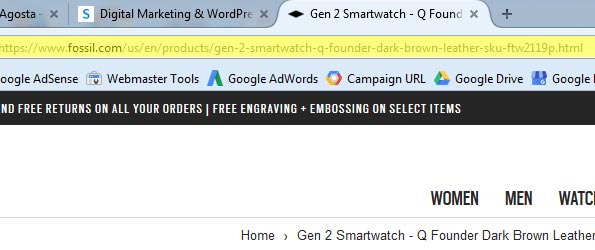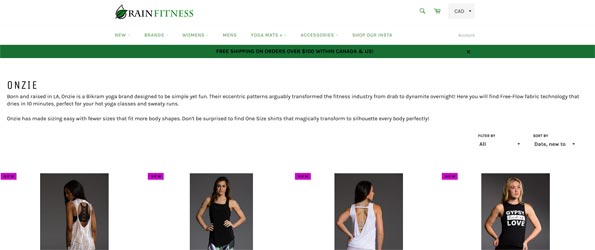- Home
- About Me
- My Work
- What I Do
Design & Development
Digital Marketing
Consulting & Speaking
- Weekly Blog

June 27, 2017

Getting your ecommerce website ranked on the first page of search engines like Google and Bing may not be as difficult as you think. With a little patience, a lot of research and some good old-fashioned “know-how” you can increase the amount of organic traffic coming to your website in just a few short months.
When it comes to SEO there are no guarantees. In fact, the one thing that never changes about SEO is that there is always change. That being said, the 5 on-site SEO tips shared below have proven to work in the past and barring a significant change in the algorithms search engines use to rank websites, they will continue to work in the future.
The one thing to keep in mind as you implement these ideas is that SEO is a marathon and not a sprint. Even if you flawlessly implement each of the on-site tips below, it could be 3-12 months before you see a significant bump in your organic traffic.
As far as on-site SEO is concerned there is no aspect more important than optimizing your title and META description tags. Search engines use your title and META description tags to not only understand what your website is about but also in their search results. The title tag information you add to your website is the blue link that appears on search engines and the META description is the brief content that appears below the link. Be sure to optimize these tags for ALL pages of your website including homepage, product pages and product category pages.
Example: Ly Sports – Men’s Swimwear

Most ecommerce platforms used by small businesses today allow the administrator to determine the URL of product and product category pages. Some systems like Shopify start with a default variable value (eg. product-382030) that means absolutely nothing to search engines. Be sure to update that variable with the product or category name based on that page. A proper URL for a product named “Samsung Galaxy S7” should be “www.example.com/product/samsung-galaxy-s7/” not “www.example.com/product/product-382030”.
Example: Fossil Product Pages
Another simple on-site SEO tip for ecommerce websites is to add an “alt” tag to each and every image on your website. Similar to the page-friendly URLs, most ecommerce platforms allow you to optimize your images by including “alternative” or “alt” text to describe the image. Fill-in the “alt” text with short descriptive text about the product (no more than 5 or 6 words). If you have multiple images on products pages to showcase various styles and colours, give them each their own “alt” tag as well.
Example: Forever 21 Product Images
A blog is not only a great way to gain organic traffic but it also doubles as great content to share on your social media. Setup a blog on your ecommerce website and update it a minimum of 2-4x a month with unique, thoughtful content surrounding product comparisons, product reviews, new arrivals, best sellers etc. Blogs should be a minimum of 200-300 words and include topics related to your keywords. Once you’ve posted your blog, be sure to optimize the title and META description tags on it as well.
Example: Dollar Shave Club Blog

This is the one most ecommerce website owners seem to forget or possibly aren’t able to implement given their platform. Adding a paragraph of well-written descriptive text to each product and category page of your website will go a very long way in earning your website additional organic traffic. Most platforms allow you to add descriptive text to products but adding to category pages is equally important. When paired with keyword optimized title and META description tags, on-page content serves as another way for you to tell search engines (and customers) what the page is all about.
Example: Rain Fitness Onzie Category Page
Topic: SEO
Written By: Sebastian Agosta